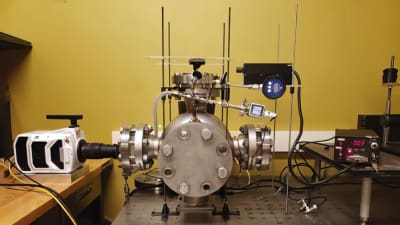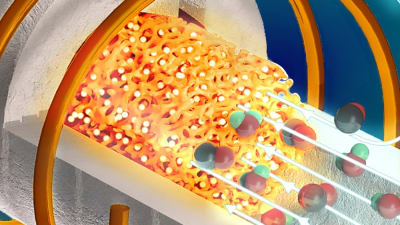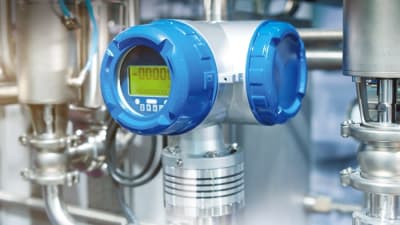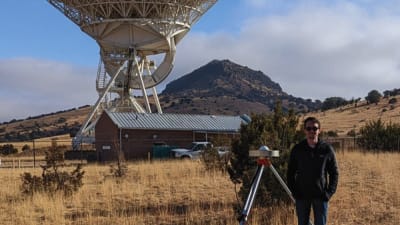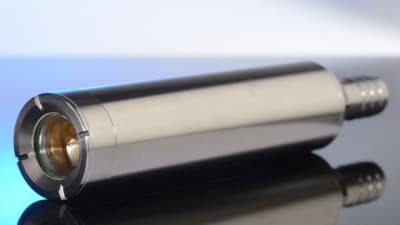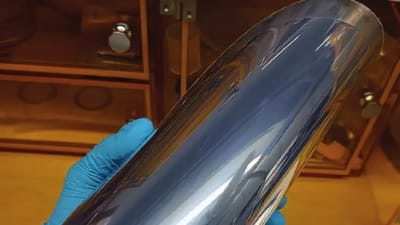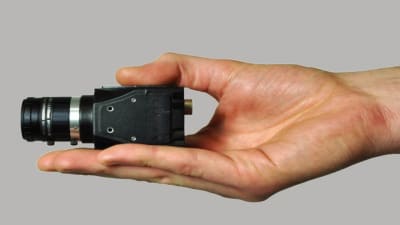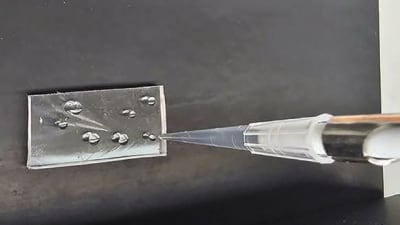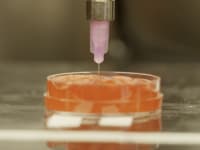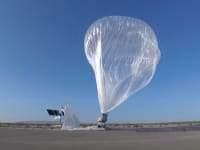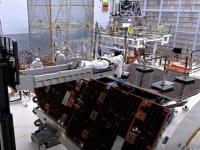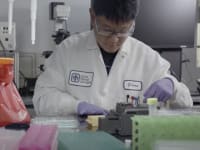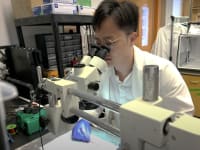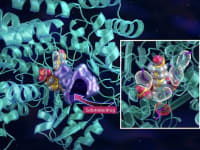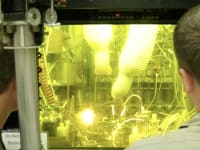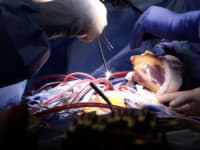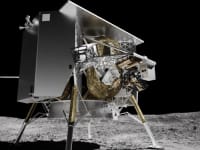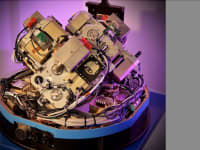Stories
6
61
-1
90
30
Briefs: Propulsion
A novel micropropulsion system was developed for nanosatellite applications using a liquid-fed pulsed-plasma thruster. It uses a liquid propellant for a Lorentz-force pulsed-plasma accelerator and an extended lifetime ignition system driven by nanosecond-long pulses. Read on to learn more.
Briefs: RF & Microwave Electronics
A research team from the University of Waterloo’s Laboratory for Emerging Energy Research is looking into processing lunar regolith, the Moon’s top layer of soil and dust, into usable materials for life support, energy generation, and construction. This includes investigating the use of defunct satellite material as a fuel source when mixed with lunar regolith. Read on to learn more.
Briefs: Physical Sciences
Purdue University engineers have developed a method to transform existing cloth items into battery-free wearables resistant to laundering. These smart clothes are powered wirelessly through a flexible, silk-based coil sewn on the textile. Read on to learn more.
Briefs: Aerospace
Potential Solvents for Building on Moon and Mars
Researchers have taken the first steps toward finding liquid solvents that may someday help extract critical building materials from lunar and Martian rock dust, an important piece in making long-term space travel possible. Read on to learn more.
Articles: Materials
See the products of tomorrow, including a 3D microwave antenna, smart CCTV systems trained to spot blockages in urban waterways, and a full-scale prototype for six telescopes that will enable, in the next decade, the space-based detection of gravitational waves.
INSIDER: Motion Control
A peek through an optical microscope reveals a hidden universe teeming with life. Nature has devised ingenious methods for micro-organisms to navigate their viscous...
Q&A: AR/AI
Professor Animashree (Anima) Anandkumar and her team at The California Institute of Technology (Caltech) have developed a control strategy for unmanned aerial vehicles (UAVs) that uses reinforcement learning to adaptively learn how turbulent wind can change over time and then uses that knowledge to control the UAV based on what it is experiencing.
Articles: Energy
The Department of Energy has given the green light for construction to begin on a high-energy upgrade that will further boost the performance of the Linac Coherent Light Source (LCLS), the world’s most powerful X-ray free-electron laser (XFEL) at the DOE’s SLAC National Accelerator Laboratory. Read on to learn more about it.
Videos of the Month: Robotics, Automation & Control
See the videos of the month, including one on a humanoid robot that can effortlessly learn and perform a variety of expressive movements all while maintaining a steady gait on diverse terrains; one on Picotaur, the first legged robot of its size to run, turn, push loads, and climb miniature stairs; one on the DoD’s All Domain Test Range; and one on using generative AI and cutting-edge scene-mapping technology to elevate robots from simple tools to being capable of providing aid in disaster and battlefield scenarios.
Q&A: Materials
Professor Jonathan Fan and his team at Stanford Engineering have designed and demonstrated a new type of thermochemical reactor that can generate the immense amounts of heat required for many industrial processes by using electricity instead of burning fossil fuels.
Articles: Power
In this article, we'll discuss how modeling and simulation can be used to facilitate the design of thermal management systems for EV batteries – from the cell scale up. Read on to learn more.
Articles: Test & Measurement
When processing pharmaceutical products, how do you tell if a fluid is of high quality? If you are working with crude oil, how do you know how much you are extracting? If you are transporting water, how do you know the flow rate? Such questions, which impact confidence and bottom lines for water, food, life sciences, and oil and gas companies, are addressed by the manufacturers of flowmeters that are installed in pipelines and other equipment. Read on to learn more.
Briefs: Energy
Researchers have developed a new technique to solve the problem of how to increase the capacity of sodium-ion batteries. Read on to learn more about it.
Briefs: Test & Measurement
Capacitive Microgravity Fluid Mass Gauge
Measuring fluid mass in microgravity, where fluid behavior is dominated by fluid properties, is a challenging problem. To address this problem, engineers at NASA are developing a capacitance-based, mass-fraction gauge for vessels containing two-phase fluids. Read on to learn more.
Briefs: RF & Microwave Electronics
For the first time, researchers at The University of Texas at Austin’s Applied Research Laboratories and NASA’s Goddard Space Flight Center have formed a radio interferometer between a GPS antenna and receiver and a large radio telescope. Read on to learn more about the new technique.
Articles: Physical Sciences
Optics are used in a vast range of applications in virtually every sector of human endeavor, from scientific microscopes to medical diagnostic imaging, from automobile headlights to telescopes pointed at the stars. Read on to learn about their advances.
Products: Software
See the new products, including TRIOPTICS' expansion of its OptiCentric® 101 centration measurement system, a new type of laser-based immersion probe, LightSolver's breakthrough in quantum-inspired high-performance computing, Teledyne FLIR's next-generation embedded software for the ITAR-free Boson+ thermal camera module, IDS Imaging Development Systems' all essential camera components for the uEye ACP series, and much more.
Articles: Physical Sciences
Have you ever gazed at the vastness of the stars and wondered what else your CNC machine can create? Greg Green had the opportunity to find out when he joined the staff at the Canada-France-Hawaii Telescope (CFHT) in Waimea, Hawaii. Read on to find out what happened.
Articles: Design
Propulsion systems that were once crafted in very limited quantities now need to be manufactured by the thousands. This scale-up necessitates a new design and development approach that blends modern manufacturing principles with legacy systems. Read on to learn more about it.
Briefs: Materials
Researchers have developed a new way to produce and shape large, high-quality mirrors that are much thinner than conventional space-telescope mirrors. The final product is even flexible enough to be rolled up and stored compactly inside a launch vehicle. Read on to learn more.
Articles: RF & Microwave Electronics
Developments in ultra-narrow manufacturing capabilities enable transformative, world-changing, technology. Read on to learn how boundaries are being pushed.
Briefs: Photonics/Optics
The palm-sized light field camera could improve autonomous driving, classification of recycled materials, and remote sensing. Read on to learn more about it.
Articles: Manned Systems
See the products of tomorrow, including a new type of glass with unique and even contradictory properties, a novel approach for actively controlling Dutch-roll oscillations of an eVTOL aircraft by using existing outboard propellers to dampen oscillations, and the world’s first practical titanium-sapphire laser on a chip.
Articles: Materials
A 100 percent solid-state, high-performance polymer electrolyte addresses issues with liquid electrolytes for safer battery cell designs. Read this article to learn more.
Briefs: Energy
A research team from Pohang University has successfully enhanced the performance and durability of all-solid-state batteries. This breakthrough was made possible through the implementation of a novel approach known as bottom electrodeposition. Read on to learn more.
Briefs: Power
Innovators at NASA Johnson Space Center have designed a science enclosure system for science experiments conducted aboard the International Space Station (ISS). It allows users the ability to safely manipulate objects of study within the transparent enclosure by utilizing protective boundary layer innovations whose designs may be transferable to other containment systems.
Briefs: Materials
Electrodynamic dust shields (EDSs) are a key method to actively clean surfaces by running high voltages (but low currents) through electrodes on the surface. The forces generated by the voltage efficiently remove built-up, electrically charged dust particles. Innovators have developed a new transparent EDS for removing dust from space and lunar solar cells among other transparent surfaces.
Briefs: Materials
Advancing Chemical Recycling of Waste Plastics
New research from the lab of Giannis Mpoumpakis, Associate Professor of Chemical and Petroleum Engineering at the University of Pittsburgh, focuses on optimizing a promising technology called pyrolysis, which can chemically recycle waste plastics into more valuable chemicals.
Briefs: Materials
Examining lithium metal batteries using nuclear magnetic resonance spectroscopy may help in the design of new electrolytes and anode surfaces for high-performance batteries. Read on to learn more.
Top Stories
Blog: Manufacturing & Prototyping
2025 Holiday Gift Guide for Engineers: Tech, Tools, and Gadgets
INSIDER: Research Lab
Scientists Create Superconducting Semiconductor Material
Blog: Software
Quiz: Materials
Blog: Aerospace
Tech Briefs Wrapped 2025: Top 10 Technology Stories
Blog: Manufacturing & Prototyping
Webcasts
 Upcoming Webinars: AR/AI
Upcoming Webinars: AR/AI
The Real Impact of AR and AI in the Industrial Equipment Industry
 Upcoming Webinars: Motion Control
Upcoming Webinars: Motion Control
Next-Generation Linear and Rotary Stages: When Ultra Precision...
 Upcoming Webinars: Energy
Upcoming Webinars: Energy
Hydrogen Engines Are Heating Up for Heavy Duty
 Podcasts: Medical
Podcasts: Medical
How Wearables Are Enhancing Smart Drug Delivery
 Podcasts: Power
Podcasts: Power
SAE Automotive Podcast: Solid-State Batteries



